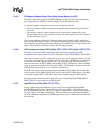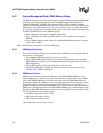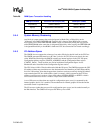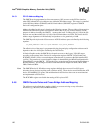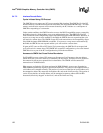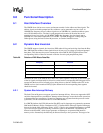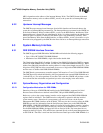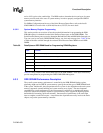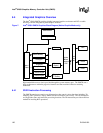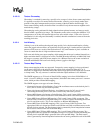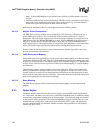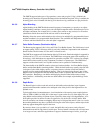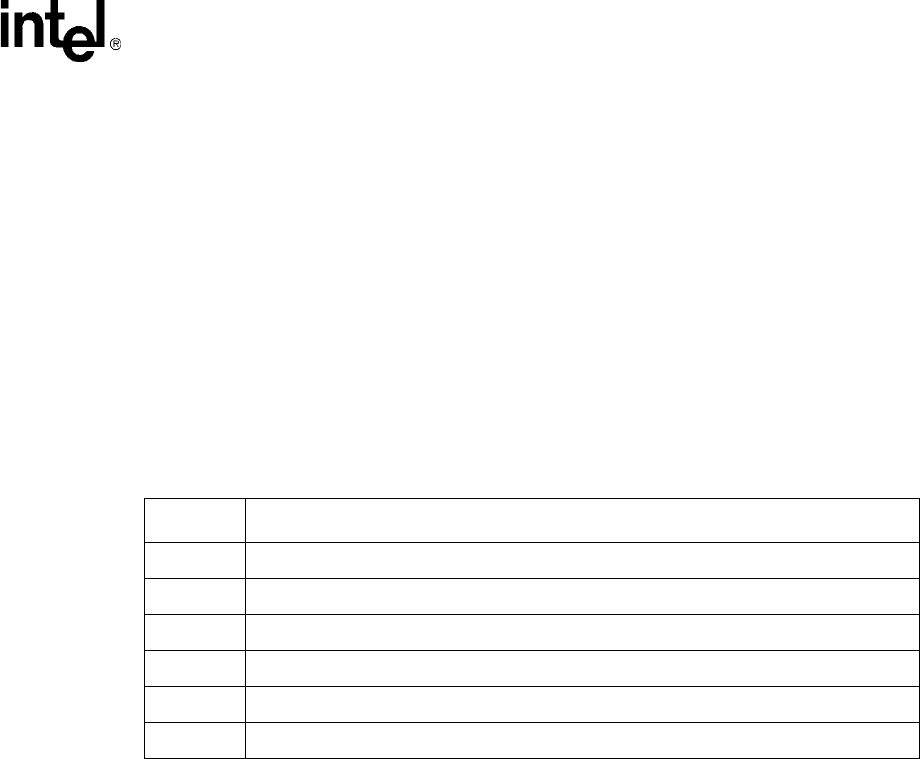
Functional Description
D15343-003 125
series of I/O cycles to the south bridge. The BIOS needs to determine the size and type of system
memory used for each of the rows of system memory in order to properly configure the GMCH
system memory interface.
For SMBus Configuration and Access of the Serial Presence Detect Ports, refer to the Intel®
82801DBM I/O Controller Hub 4 (ICH4-M) Datasheet (252337) for more detail.
6.3.2.2 System Memory Register Programming
This section provides an overview of how the required information for programming the DDR
SDRAM registers is obtained from the Serial Presence Detect ports on the DDR DIMMs. The
Serial Presence Detect ports are used to determine Refresh Rate, MA and MD Buffer Strength, row
Type (on a row by row basis), DDR SDRAM Timings, row sizes and row page sizes. Table 30 lists
a subset of the data available through the on board Serial Presence Detect ROM on each DDR
DIMM.
Table 30. Data Bytes on DDR DIMM Used for Programming DRAM Registers
Table 30 is only a subset of the defined SPD bytes on the DDR DIMMs. These bytes collectively
provide enough data for programming the GMCH DDR SDRAM registers.
6.3.3 DDR SDRAM Performance Description
The overall system memory performance is controlled by the DDR SDRAM timing register,
pipelining depth used in GMCH, system memory speed grade and the type of DDR SDRAM used
in the system. Besides this, the exact performance in a system is also dependent on the total system
memory supported, external buffering and system memory array layout. The most important
contribution to overall performance by the system memory controller is to minimize the latency
required to initiate and complete requests to system memory, and to support the highest possible
bandwidth (full streaming, quick turn-arounds). One measure of performance is the total flight
time to complete a cache line request. A true discussion of performance really involves the entire
chipset, not just the system memory controller.
Byte Function
2 System Memory Type (DDR SDRAM)
3 Number of row addresses, not counting Bank Addresses
4 Number of Column Addresses
5 Number of DIMM banks
12 Refresh Rate/Type
17 Number Banks on each Device



